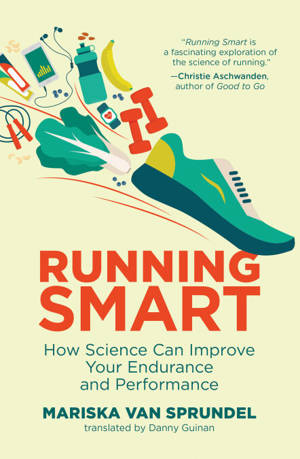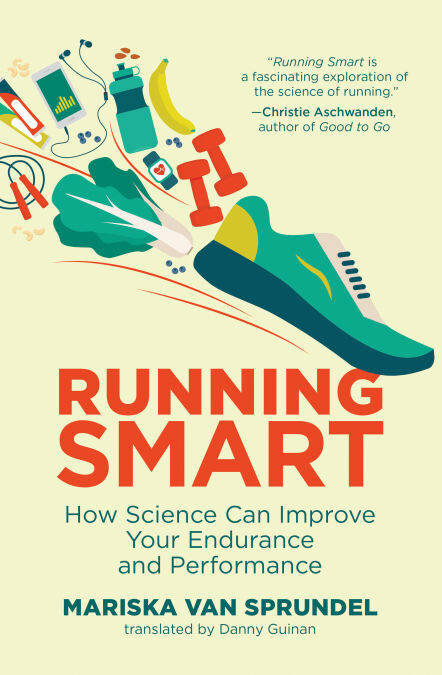
Je cadeautjes zeker op tijd in huis hebben voor de feestdagen? Kom langs in onze winkels en vind het perfecte geschenk!
- Afhalen na 1 uur in een winkel met voorraad
- Gratis thuislevering in België vanaf € 30
- Ruim aanbod met 7 miljoen producten
Je cadeautjes zeker op tijd in huis hebben voor de feestdagen? Kom langs in onze winkels en vind het perfecte geschenk!
- Afhalen na 1 uur in een winkel met voorraad
- Gratis thuislevering in België vanaf € 30
- Ruim aanbod met 7 miljoen producten
Zoeken
Running Smart E-BOOK
How Science Can Improve Your Endurance and Performance
Mariska van Sprundel
E-book | Engels
€ 24,59
+ 24 punten
Omschrijving
A science writer and recreational runner explores the science behind popularly held beliefs about shoes, injuries, nutrition, "runner's high," and more.
Conventional wisdom about running is passed down like folklore (and sometimes contradicts itself): the right kind of shoe prevents injury--or running barefoot, like our prehistoric ancestors, is best; eat a high-fat diet--and also carbo load before a race; running cures depression--but it might be addictive; running can save your life--although it can also destroy your knee cartilage. Often it's hard to know what to believe. In Running Smart, Mariska van Sprundel, a science journalist and recreational runner who has had her fair share of injuries, sets out to explore the science behind such claims.
In her quest, van Sprundel reviews the latest developments in sports science, consults with a variety of experts, and visits a sports lab to have her running technique analyzed. She learns, among other things, that according to evolutionary biology, humans are perfectly adapted to running long distances (even if our hunter-gatherer forebears suffered plenty of injuries); that running sets off a shockwave that spreads from foot to head, which may or may not be absorbed by cushioned shoes; and that a good sports bra controls the ping pong-like movements of a female runner's breasts. She explains how the body burns fuel, the best foods to eat before and after running, and what might cause "runner's high." More than fifty million Americans are runners (and a slight majority of them are women). This engaging and enlightening book will help both novice and seasoned runners run their smartest.
Conventional wisdom about running is passed down like folklore (and sometimes contradicts itself): the right kind of shoe prevents injury--or running barefoot, like our prehistoric ancestors, is best; eat a high-fat diet--and also carbo load before a race; running cures depression--but it might be addictive; running can save your life--although it can also destroy your knee cartilage. Often it's hard to know what to believe. In Running Smart, Mariska van Sprundel, a science journalist and recreational runner who has had her fair share of injuries, sets out to explore the science behind such claims.
In her quest, van Sprundel reviews the latest developments in sports science, consults with a variety of experts, and visits a sports lab to have her running technique analyzed. She learns, among other things, that according to evolutionary biology, humans are perfectly adapted to running long distances (even if our hunter-gatherer forebears suffered plenty of injuries); that running sets off a shockwave that spreads from foot to head, which may or may not be absorbed by cushioned shoes; and that a good sports bra controls the ping pong-like movements of a female runner's breasts. She explains how the body burns fuel, the best foods to eat before and after running, and what might cause "runner's high." More than fifty million Americans are runners (and a slight majority of them are women). This engaging and enlightening book will help both novice and seasoned runners run their smartest.
Specificaties
Betrokkenen
- Auteur(s):
- Vertaler(s):
- Uitgeverij:
Inhoud
- Aantal bladzijden:
- 304
- Taal:
- Engels
Eigenschappen
- Productcode (EAN):
- 9780262365208
- Verschijningsdatum:
- 13/09/2021
- Uitvoering:
- E-book
- Beveiligd met:
- Adobe DRM
- Formaat:
- ePub

Alleen bij Standaard Boekhandel
+ 24 punten op je klantenkaart van Standaard Boekhandel
Beoordelingen
We publiceren alleen reviews die voldoen aan de voorwaarden voor reviews. Bekijk onze voorwaarden voor reviews.









